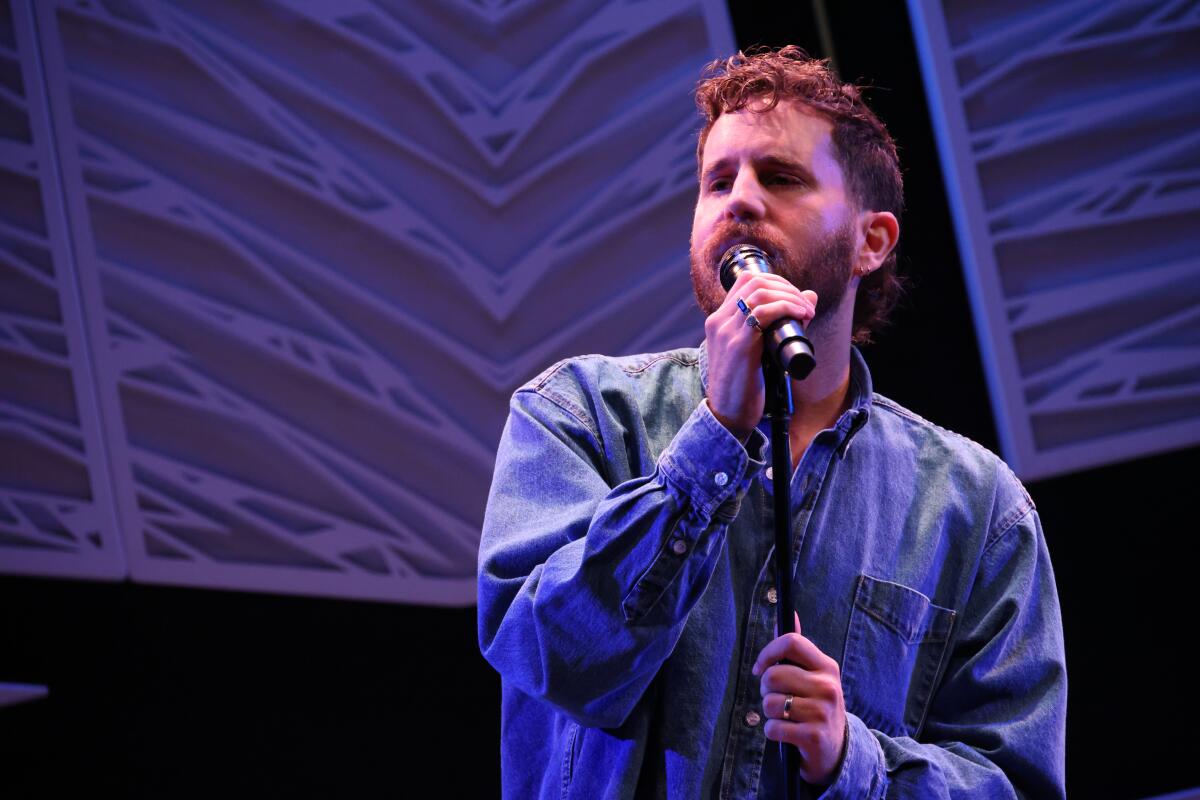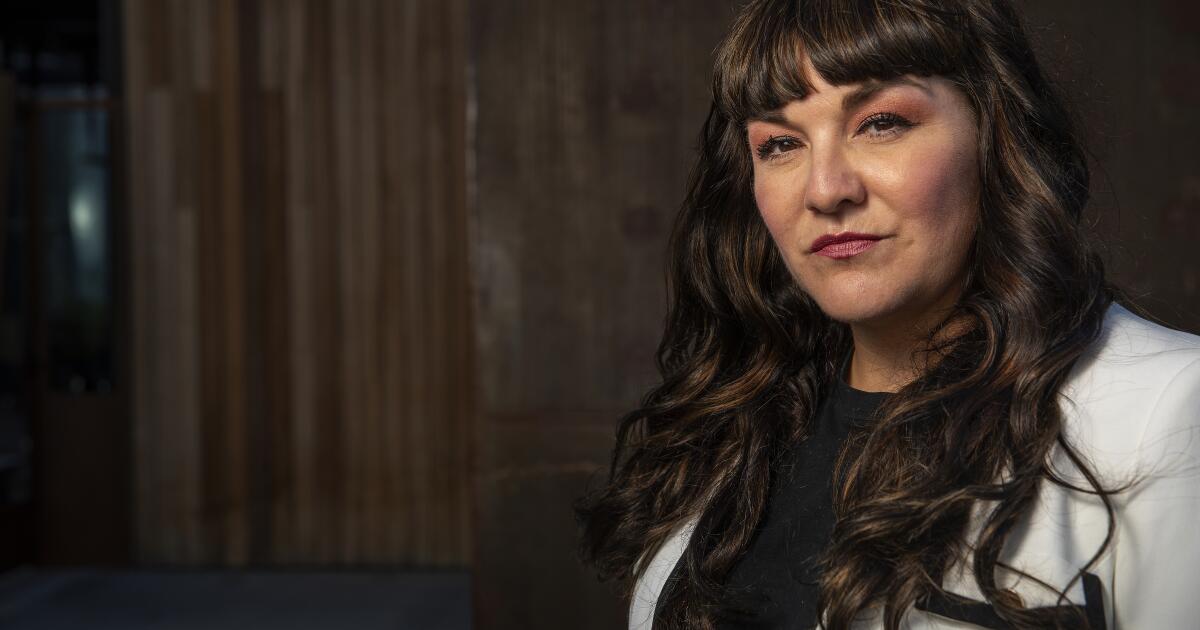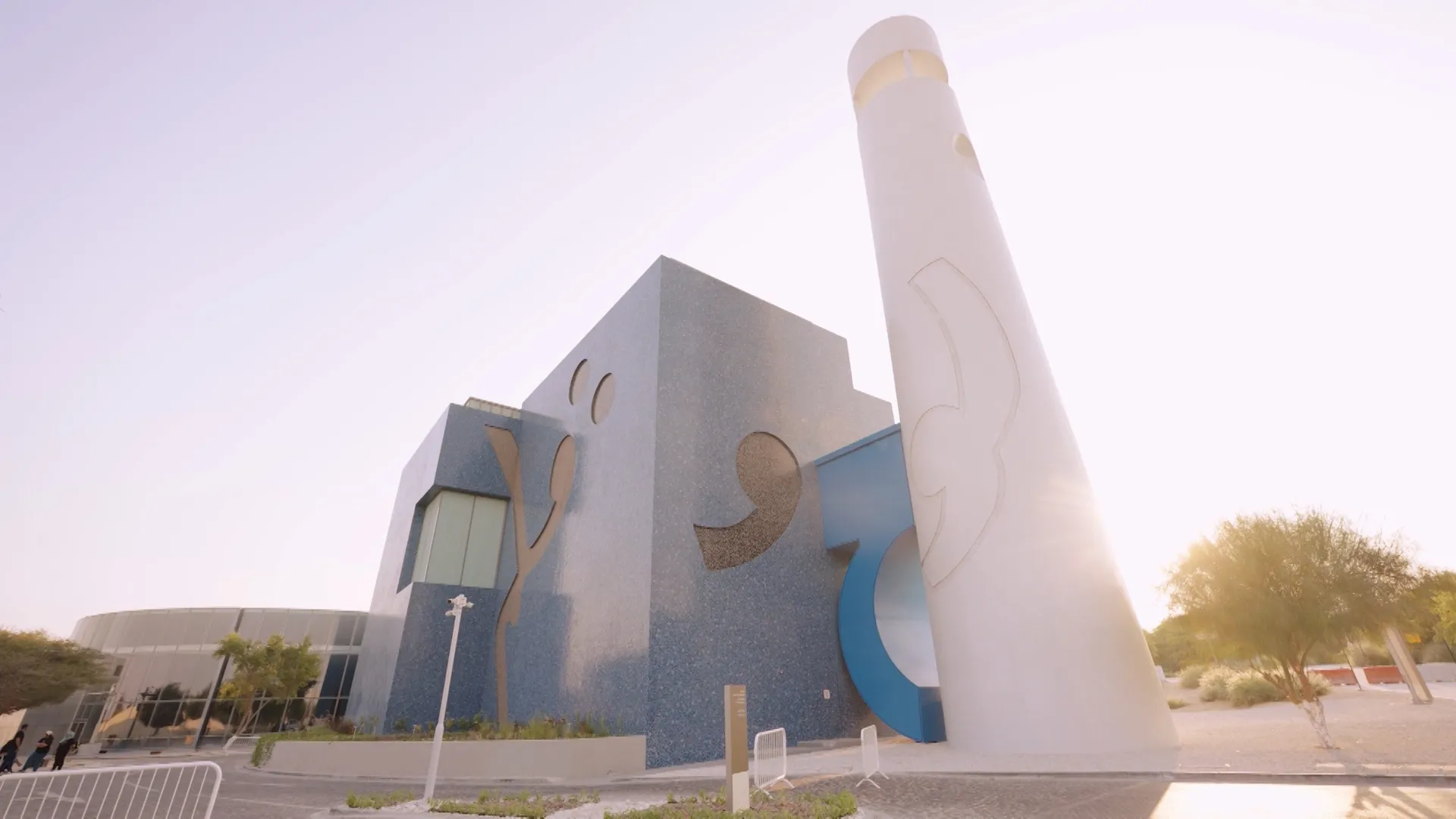A new director for O.C. museum: L.A. arts and culture this weekend
Kathy Kanjo, the director and CEO of the Museum of Contemporary Art San Diego, has been named the new director of the UC Irvine Langson Orange County Museum of Art. The news comes a little more than two months after UC Irvine announced it had acquired Orange County Museum of Art in a merger that created the new institution.
At that time, a rep for UCI said the hope was to announce a new director in the new year, so Kanjo’s appointment comes ahead of schedule. Kanjo has been at MCASD since 2016. Prior to that, she served as director of the University Art Museum at UC Santa Barbara.
When I first wrote about the merger, UC Irvine confirmed that it was taking over OCMA’s assets, employees and debt. A rep for UC Irvine declined to comment on a number, writing in an email that the budget for the new museum will come from university operating funds.
Kanjo inherits responsibility for a substantial collection of more than 9,000 artworks, including UC Irvine’s Gerald Buck Collection of more than 3,200 paintings, sculptures and works on paper by some of the state’s most important artists, including David Hockney and Ed Ruscha.
“The newly merged collection is both anticipated and underknown,” wrote Kanjo in an email. “I am eager to unveil and contextualize the artistic legacies of the Irvine, Buck, and OCMA collections from a particularly California point of view. Collected over time and together at last, these objects are an asset to be shared generously and supported by scholarly research. The constellation that is the UC Irvine Langson Museum offers a portrait of our state’s innovative artistic impulses.”
Kanjo also said the new museum would get a significant boost from UC Irvine’s research strength and commitment to public service.
“We will create rigorous and welcoming exhibitions that resonate with our region’s diverse audiences, young and old,” she wrote.
Despite the great fanfare of its opening in 2022, OCMA — with its 53,000-square-foot, $98-million Morphosis-designed building on the eastern edge of the Segerstrom Center for the Arts campus — never seemed fully realized. Problems were hinted at — but never explained — in April when CEO Heidi Zuckerman announced her intention to step down.
Meanwhile UC Irvine had been planning to construct a museum for its collection for quite some time. That, too, never really got off the ground. If there were ever a time to build consensus around a new mandate for the merged organizations, that time is now. Kanjo has a vision for the future that appears to center scholarship.
“I want to clarify the core identity of the collection and find connections back to campus and into the community,” she wrote. “The post is appealing because of its connection to UC Irvine, a leading research university, and the opportunity to work with the students within the Claire Trevor School of the Arts and all of the campus resources. The potential to foster innovation by working in a cross-disciplinary/cross-campus way is strong.”
I’m arts and culture writer Jessica Gelt, planning a drive to Orange County in the new year. Here’s your arts and culture news for the week.
On our radar

Broadway star Ben Platt will perform 10 shows at the Ahmanson starting Friday.
(Rob Kim / Getty Images)
Ben Platt: Live at the Ahmanson
The award-winning star of stage and screen hits town for 10 shows where he’ll sing his greatest hits and Broadway favorites. And where Platt goes, his big-time friends follow, so expect some great surprise guests each night.
8 p.m. Friday-Saturday and Dec. 19-20; 3 and 8 p.m. Sunday and Dec. 21; 7:30 p.m. Wednesday-Thursday. Ahmanson Theatre, 135 N. Grand Ave., downtown L.A. centertheatregroup.org

“Holiday Legends” is this year’s seasonal performance by the Gay Men’s Chorus of Los Angeles.
(Gay Men’s Chorus of Los Angeles)
Holiday Legends
The Gay Men’s Chorus of Los Angeles’ annual celebration pays homage to the greats, including Mariah Carey, Irving Berlin and Johnny Mathis, plus traditional choral classics, pop Christmas anthems and Hanukkah favorites.
8 p.m. Saturday. 3 p.m. Sunday. Saban Theatre, 8440 Wilshire Blvd., Beverly Hills gmcla.org

The Huntington in San Marino.
(Allen J. Schaben/Los Angeles Times)
Stories from the Library: From Brontë to Butler
This series highlights the literary side of the Huntington and its world-class library. In the newest exhibition, journals, letters, photographs and personal items provide a behind-the-scenes look at two centuries of women writers bookended by Charlotte Brontë and Octavia E. Butler.
Through June 15. The Huntington, 1151 Oxford Road, San Marino. huntington.org
The week ahead: A curated calendar
FRIDAY
Holiday Soirée & Cabaret
Fountain Theatre celebrates the season with a live announcement of its 2026 season, a cabaret performance from Imani Branch & Friends, plus, a raffle and reception. There will also be two separate performances of the cabaret.
Soirée and cabaret: 7 p.m. Friday. Cabaret: 7 p.m. Saturday; 2 p.m. Sunday. Fountain Theatre, 5060 Fountain Ave. FountainTheatre.com

Violinist Renaud Capuçon.
(Los Angeles Philharmonic)
Mozart & Sibelius
Violinist Renaud Capuçon joins conductor Gustavo Gimeno and the L.A. Phil for a program that combines “Mozartian elegance with brooding Nordic drama.”
8 p.m. Friday and Saturday; 2 p.m. Sunday. Walt Disney Concert Hall, 111 S. Grand Ave., downtown L.A. laphil.com
Santasia
The long-running holiday spectacle featuring broad comedy, musical parodies and old school claymation returns to L.A. for a 26th year.
Through Dec. 27. Whitefire Theatre, 13500 Ventura Blvd., Sherman Oaks. santasia.com
SATURDAY

Laurel Halo performs Saturday at the Nimoy.
(Norrel Blair)
Laurel Halo
Currently based in L.A., the musician combines ambient, drone, jazz and modern sensibilities in new works for piano and electronics in a preview of her forthcoming album.
8 p.m. UCLA Nimoy Theater, 1262 Westwood Blvd. cap.ucla.edu
Sound + Source
Art meets music as DJs Novena Carmel, Francesca Harding and KCRW music director Ale Cohen provide a site-specific soundtrack to the exhibition “Corita Kent: The Sorcery of Images.”
11 a.m.-6 p.m. Marciano Art Foundation, 4357 Wilshire Blvd. marcianoartfoundation.org
Pacific Jazz Orchestra
The 40-piece hybrid big band and string ensemble, led by Chris Walden, presents its “Holiday Jazz Spectacular,” featuring vocalists Aloe Blacc, Sy Smith and Brenna Whitacre.
8 p.m. Alex Theatre, 216 N. Brand Blvd., Glendale. pacificjazz.org
Holiday Family Faire
Theatricum Botanicum’s annual daylong winter wonderland featuring performances, food and drink and a marketplace; followed by “It’s a Wonderful Life: A Live Radio Play,” by Joe Landry, and starring Beau Bridges, Wendie Malick, Joe Mantegna and Rory O’Malley.
11 a.m. Family Faire; 5 p.m. “It’s a Wonderful Life.” Will Geer Theatricum Botanicum, 1419 Topanga Canyon Blvd, Topanga. theatricum.com
SUNDAY

The band Emily’s Sassy Lime in Olympia, Wash., circa 1995.
(Emily’s Sassy Lime)
Artist Talk
Emily Ryan, Amy Yao and Wendy Yao of the ‘90s Orange County riot grrrl band Emily’s Sassy Lime join artist-activist-musician Kathleen Hanna of the band Bikini Kill for a discussion of adolescence, creativity and community. The talk is part of the museum’s “2025 California Biennial: Desperate, Scared, But Social,” which closes Jan. 4.
2 p.m. UC Irvine Langson Museum/Orange County Museum of Art, 3333 Avenue of the Arts, Costa Mesa. ocma.art
English Cathedral Christmas
The Los Angeles Master Chorale brings the magic of Canterbury Cathedral downtown, reveling in the grand tradition of British choral works from the 16th century to the present..
7 p.m Walt Disney Concert Hall, 111 S. Grand Ave., downtown L.A. lamasterchorale.org
TUESDAY
Aron Kallay
In “Midcentury/Modern,” the pianist performs works from world premieres by Michael Frazier, Zanaida Stewart Robles and Brandon Rolle, along with 20th century works by Grażyna Bacewicz and Sergei Prokofiev in a program presented by Piano Spheres.
8 p.m. Thayer Hall at the Colburn School, 200 S. Grand Ave., downtown L.A. pianospheres.org
WEDNESDAY
BOTH: A Hard Day’s Silent Night
Open Fist Theatre Company’s annual holiday charity concert benefiting Heart of Los Angeles, an organization that helps kids in underserved communities, infuses the music of the Beatles with Gospel flair to tell the Christmas story.
8 p.m. Wednesday-Friday; 3:30 and 9 p.m. Saturday; 3:30 and 7 p.m. Sunday. Atwater Village Theatre, 3269 Casitas Ave. openfist.org

Elaine May and Walter Matthau star in “A New Leaf,” which screens at the Academy Museum on Wednesday.
(Film Publicity Archive/United Archives via Getty Images)
A New Leaf
Elaine May made Hollywood history with this 1971 screwball noir as the first woman to write, direct and star in her own feature film. Walter Matthau co-stars as a playboy who has burned through his own fortune so plans to marry and murder May’s kooky heiress to get hers.
7:30 p.m. Academy Museum, 6067 Wilshire Blvd. academymuseum.org
Culture news and the SoCal scene

Architect Frank Gehry in his Playa Vista office in 2015.
(Ricardo DeAratanha / Los Angeles Times)
The world is mourning the death of legendary architect Frank Gehry, who died last Friday at age 96. Times classical music critic Mark Swed wrote a beautiful appreciation about how Gehry used his buildings — Walt Disney Concert Hall in particular — to transform music. I made a video appreciation that tried to encapsulate Gehry’s best work, and his deep connection to his adopted hometown, and L.A. Times contributor Sam Lubell compiled a list, with photographs, of Gehry’s finest buildings in L.A., and around the world. Deputy managing editor Shelby Grad wrote about the importance of the Gehry-designed Danzinger studio.
This week also marked the release of The Times best-of-2025 lists. These include Swed’s selection of the best of L.A.’s classical music performances; Times theater critic Charles McNulty’s pick of the best theatrical works;
and former (sob!) Times art critic Christopher Knight’s 10 best art shows at SoCal museums.
Swed also wrote a story that came out of a recent trip to Tokyo about Carl Stone, an L.A. based composer from the Japanese capital, who uses his laptop to record environmental sounds and transform them into sonic sculptures. “Stone’s iPad, with its open sonic complexity, created a sense of space, a roomy aural soundscape in which jazz and butoh became elements not egos, not larger than life, just more life, the merrier,” writes Swed.
McNulty wrote an interesting essay about characters breaking the fourth wall and how it can galvanize an audience. “Breaking the fourth wall is a tried-and-true method of calling an audience to attention. But a new breed of dramatist, writing in an age of overlapping calamities — environmental, political, economic, technological and moral — is retooling an old playwriting device to do more than inject urgency and immediacy in the theatrical experience,” McNulty writes.
I spent time in Palm Springs over the Thanksgiving break to cover the grand reopening of the Palm Springs Plaza Theatre, which recently underwent a $34-million restoration. To celebrate, it hosted an intimate show featuring actor, singer, songwriter Cynthia Erivo.
I also had the pleasure of sitting down for an interview with Broadway actor Ben Platt in advance of his 10-day residency at the Ahmanson Theatre. We bonded over being anxious people, and he shared that he keeps his anxiety in check through live performance.
Enjoying this newsletter? Consider subscribing to the Los Angeles Times
Your support helps us deliver the news that matters most. Become a subscriber.

Cameron Watson is the new artistic director of Skylight Theatre Company.
(David Zaugh)
Cameron Watson has been named Skylight Theatre Company’s new artistic director, beginning Jan. 1. He will replace Gary Grossman, who is stepping down after four decades at the helm of the Los Feliz-based theater, during which time he turned the company into one of the most respected small theaters in the city. “Cameron’s passion, his theatrical vision and his ability to lead, listen, nurture and mentor make him the perfect fit for Skylight,” Grossman said in a statement.
Earlier this week, philanthropist MacKenzie Scott gave $20 million to the Japanese American National Museum — the largest single gift in the organization’s history. Scott, the former wife of Amazon founder Jeff Bezos, also gave the museum $10 million in 2021.
Hamza Walker, the Brick executive director who is behind the critically acclaimed “Monuments” exhibit at the Brick and MOCA, has been honored with the 2026 Audrey Irmas Award for Curatorial Excellence, given by the Bard College Center for Curatorial Studies. “Hamza’s three decades of curatorial practice have brought forward voices and perspectives that challenge dominant narratives, create dialogue, and have left a lasting imprint on the field,” said Tom Eccles, executive director of the Center for Curatorial Studies, in a statement.
Sherman Oaks resident Kate Stermer won the National Portrait Gallery’s 2025 Teen Portrait Competition, alongside Matilda Myers of Towson, Md. The annual competition is open to teens ages 13 to 17, and the museum says it received more than 1,100 entries from 48 states, Guam, Puerto Rico and Washington, D.C. We here at Essential Arts are proud of you, Kate!
— Jessica Gelt
And last but not least
The Times this week released its annual list of the 101 best restaurants in Los Angeles. I plan to go to every one. Well, maybe, like 20. It could get expensive.






















